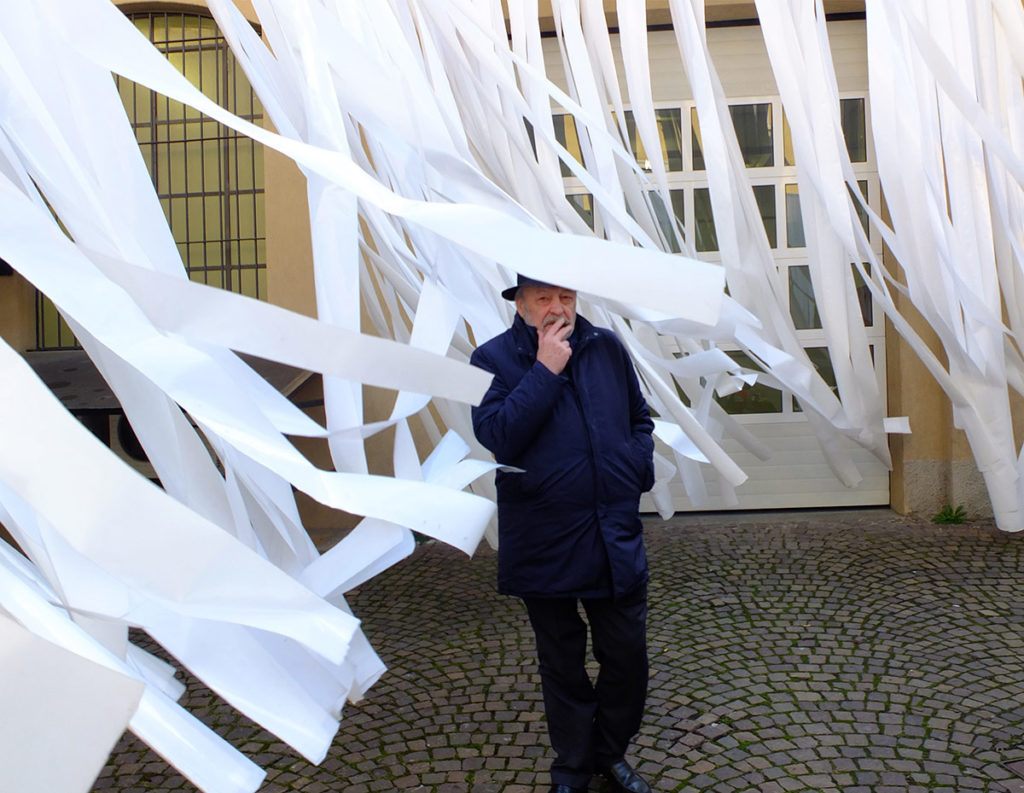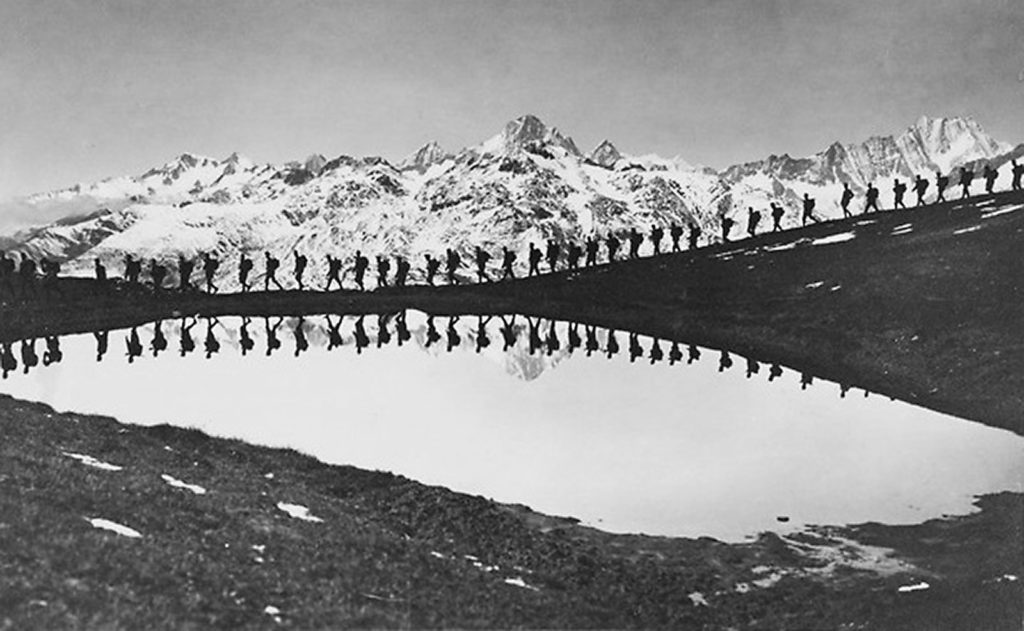DISNOVATION.ORG leads a reflection and a critical practice on the exponential use of new technologies.
This is a long-term research, whose working hypotheses are mentioned below.
Nicolas Maigret exposes the internal workings of media, through an exploration of their dysfunctions, limitations and failure thresholds which he develops into immersive, ambiguous and critical artworks. He initiated disnovation.org, a working group which aims to disrupt, pervert, and complexify the narratives on technological innovation. As part of his research fellowship at V2_ (Rotterdam) and UCL (Louvain), he is critically exploring the ideology of technosolutionism, the politics of smart cities, and the black boxes of AI.
Maria Roszkowska is an artist, designer and initiator of the DISNOVATION.ORG working group with Nicolas Maigret. From 2010 she conducted research with EnsadLab Paris, before joining Intégral Ruedi Baur, a cultural design studio based in Paris. She designed and coordinated “Don’t Brand My Public Space!”, a 3 -year research on the issue of cities applying branding strategies. In 2015 she edited The Pirate Book, an anthology of media piracy.
Disruptive is used to qualify innovations that cause a rupture or radical change, as opposed to marginal or “incremental” innovation.
Technological solutionism is a near-total faith that technology can provide a solution for any and all of our problems, from the most trivial to the social and metaphysical.
Cultic: Whose objective is worship. That which is dedicated to the celebration of worship or cult.
Hardware: All of the material equipment.
Software: The instructions given to a computer.
Wetware: A term referring to biochemical systems of various natures, from bio-implants to sound bugs and brain waves.
1. Identify past moments of failure in the history of technological utopia in order to better perceive shifts as they occur.
2. Analyse the power exerted by technological innovation and its multiple levels of influence on society, habits and the collective imagination.
3. Develop strategies to appropriate, subvert and corrupt technological infrastructure as a means toward personal and collective emancipation (i.e. Satellite voyeurism)
4. Develop deviant visions of the future that operate as generators of doubt, discomfort and to challenge the status quo (i.e. Drone-2000).
5. Develop extreme, perverse or absurd technological speculation in order to stimulate public debate (i.e. Design Fiction).
6. Develop moments and spaces of experience that bring emergent issues, which are usually hard to grasp, into our perception on a purely abstract and discursive level (i.e. Mario De Vega, Dolmen).
7. Appropriate and subvert innovations and technological power structures in order to reinvent oblique practices, other forms of infrastructure and alternative power relations (i.e. Superglue, P2P foundation).
8. Disturb the technological imagination in order to introduce new spaces of mental projection, uncultivated zones that can be reinvested (i.e. Telekommunisten).
9. Invade the field of technology with unforeseen affects to contribute to building futures that do not conform to the economic-industrial template (i.e. 3D Additivism).
10. All kinds of radical interfaces that tend toward alternative imaginary constructs in order to keep this privilege from being the sole territory of engineers and political deciding powers.
Switch (on Paper): What does the term disnovation mean to you? Should we see it as one aspect of the dystopia that people are currently talking a lot about?
DISNOVATION.ORG: DISNOVATION.ORG [catchword that means disobedient innovation] is a working group based in Paris. At the intersection of contemporary art, research in technology and hacking, we develop interface situations, debate and speculation that seek to stimulate the emergence of alternative narratives. Since 2017, we have been conducting a kind of autopsy on the ideology that comes from technological innovation through a series of investigations, artworks and critical subversion. At the same time, we are also busy with publications, like the recent The Pirate Book, conceived as an anthology of cultural content piracy.
Switch (on Paper): How does DISNOVATION.ORG function and what are your roles?
DISNOVATION.ORG : The initiative, headed by Nicolas Maigret1 and Maria Roszkowska2, functions along various configurations depending on the project and research in question. For example, Predictive Art Bot, a prediction algorithm designed to subvert emergent artistic trends, was created with Jérôme Saint-Clair (artist and developer) and Dasha Ilina (artist). Shanzai Archeology, a collection of hybrid and non-standardised technological objects, invites us to reconsider the normalisation of the Western technological imagination, and was produced with Clément Renaud (researcher) and Hongyuan Ou (designer). In other cases, we propose events that can take the shape of festivals, conferences or group exhibitions. Such was the case with the recent exhibitions in collaboration with Jeu de Paume in Paris (Futurs Non-Conformes) and Eastern Bloc in Montreal (Sight + Sound 2017).
Switch (on Paper): You advocate techno-critique, or even technological disobedience. Why so, and what does that involve? You speak particularly about the necessity to (re) politicise the topic of technology in order to propose tools for understanding phenomena like “innovation propaganda” and “digital neo-feudalism”, “algorithm governance” or “technosolutionism”.
DISNOVATION.ORG: In the ambient context of techno-enthusiasm, it seems essential to us that we develop a critical reading of the great narratives of innovation that promise a radiant future based on hyper-consumption, techno-positivism, digital colonialism and the myth of infinite growth. We aim to generate spaces for active critique and for subverting the dominant technological infrastructure by using strategies of revelation, disturbance and perversion.
Following the apologies for the progress, evolution and growth of the past centuries, the lexicon of innovation and disruption3 have become today’s ultimate rhetorical instruments. They inundate our daily discourse, starting with an invasion of the political arena all the way to the sectors of work, education and art. But in the margins of this everyday propaganda in favour of technological solutionism4, there are multiple critical, alternative or deviant, even speculative practices emerging. They invite us to identify and better understand what is at stake when it comes to technology and our society, and even propose ways to intervene.
Throughout our various projects, in our roles as curators and artists, we hope to emancipate ourselves from the linear conception of progress in order to re-integrate notions of degrowth or stasis at the heart of our visions for the future. We live on a planet that has definitively been changed by humankind’s technical activity and capitalism, and we are trying to implant a variety of artistic alternatives that, though not always plausible, are often desirable, particularly as a foundation for building critical debates and projections.

Shanzhai Archeology, DISNOVATION.ORG (with Clément Renaud and Hongyuan Qu), 2015-2017, installation at West den Haag, 2017 © West den Haag.
Switch (on Paper): You make a distinction between different disnovation practices, distinguishing between those borne of “necessity”, of “emancipation”, and those that are “cultic5” and finally “political“. Could you tell us more?
DISNOVATION.ORG: When we first started our research, we tried to identify the typologies of the practices closest to our core interest. These categories operated as working hypotheses, or let’s say a prism to decrypt certain contemporary artistic forms. But obviously there are an infinite number of practices that are category hybrids, that go beyond categories or defy them altogether.
On the one hand, we identified the disnovations of necessity; alternative technological practices that respond to the imperatives of survival, resourcefulness or substituting inaccessible artefacts. This was the case with the popular practices that emerged in Cuba following the American embargo and the end of the Soviet Union. For 50 years, no merchandise arrived to the island, and so another relationship to consumption, repairs and manufacturing had to be established. Artist and designer Ernesto Oroza documents these practices on his blog technologicaldisobedience.com.
On the other hand, there are political disnovations that constitute the strategic use of technological potential to achieve the goals of disobedience, dissidence or activism (topic of the second cycle of the exhibition Futurs Non-Conformes on virtual space at the National Gallery Jeu de Paume in Paris).
Then, there are the disnovations of emancipation, which correspond to practices that subvert the function and inherent constraints of a technology, or to the appropriation and hybridisation of said technology (topic of the third cycle of the exhibition Futurs Non-Conformes).
Finally, there are the ‘cultic’ disnovations founded on practices that shed light on the symbolic and ritual dimension of our individual and collective relationship to technological artefacts and their use. This is the case in the Supercargo project by Peter Moosgaard.
Switch (on Paper): Could you talk more about this work by Peter Moosgaard? Doesn’t he make the link between an artistic thought process and the required critical reflection on technology?
DISNOVATION.ORG: With the research blog Supercargo, Peter Moosgaard reappropriates the notion of Cargo Cult, which came about through the culture shock that occurred when aboriginal cultures met Western technology. Certain tribes integrated simulations of Western technical objects into their ritual practices, reproducing them in wood and rope, creating plane cockpits, cargo holds, weapons… Today, Moosgaard collects objects and images from contemporary artistic and popular production that are similar to the practices in Cargo Cult. His work is, in our opinion, a way of exploring the impact and place of technological artefacts outside their purely practical function. It also very clearly evokes what might remain after the disaster of hyper-consumption. A period where we might want to reproduce artefacts not so much for their practical use but for their symbolic and ritual function as lost objects.
Switch (on Paper): Coming back to The Pirate Book, and beyond the traditional clichés, what Internet Piracy represent for you today?
DISNOVATION.ORG: While editing the book, we wanted to open the field of thought onto various instances of cultural content piracy by returning to what makes these practices legitimate in our own experience: that is, the notion of necessity. The expression “pirate by necessity” is used to define situations where piracy is the main, if not unique way to access content, for political, legal, geographical or economic reasons. This opening allowed the book to not be trapped solely by moral considerations, and to avoid an over-esthetisation of the figure of the pirate. For example, a cultural content pirate (media piracy) plays an important role in emerging countries; he is someone who encourages development, diversifies the cultural offer, upholds political opposition and reduces the economic and cultural inequalities between countries. With remix, remakes and other derivation practices, piracy also acts as a way for someone to appropriate the colonial or foreign culture and create a kind of creative resistance against the Western template of a centralised market. In The Pirate Book, these themes drive the contributions by Joty Izquierdo about culture in Sonideros au Mexique, or by Ishita Tiwary on the cultures of appropriation in Indian cinema.
Switch (on Paper): You say you try to remain vigilant about “ornamental” uses or “digital distractions” that often aim to produce a kind of wonderment. But isn’t this phenomenon quite simply the result of someone’s initial or primitive discovery of these new technologies, when users ask fewer critical questions about the objects they are discovering?
DISNOVATION.ORG: There are indeed different moments when it comes to discovering and accessing technological changes. But the positive a priori regarding these changes is quite simply the product of an ideology and the propaganda of such an ideology, at a particular moment in the history of our society. The techno-capitalist system in which we participate as citizens needs this ideology to continue so that we may ride the wave of continuous growth, hyper-consumption and built-in obsolescence.
This is why we find it necessary to bring make artists aware of the role they play in the process of symbolic propagation and the validation of technological artefacts that they use. Besides, these very artists are often exploited by laboratories, companies and public powers that depend on their ability to disseminate, validate, popularize and even innovate for little pay, using different products or subjects. In the immense list of everyday examples, note the way in which Google exploits artists through the Cultural Institute, but also with its project AI-Experiment. We were particularly interested in artistic practices that are clearly aware of their potential to modify the dominant narrative, rather than simply being their mediators. That is the stance we took for the exhibition Non-Compliant Futures in Montreal.

Non-Compliant Futures, exhibition for the festival Sight+Sound 2017, Montréal
curatoriat : DISNOVATION.ORG.
Switch (on Paper): You base yourselves on a singular ambivalence, which is that of “distinguishing between the idea of progress as improvement and of Progress as an ideology”. What are the historical and philosophical foundations for this (apparent) paradox and what does it consist of, exactly?
DISNOVATION.ORG: Whether we’re talking about progress, innovation, disruption, evolution, solutionism… the situation remains the same. Today these terms are generally perceived as positive, and it is exactly this positivist a priori that creates a cognitive mess when these terms are used for the ideology of power, be it political, economic or industrial. How could we possibly be critical of values as natural or positive as those of progress and innovation? And yet, the two world wars, the atomic bomb, genocides, the persistence of poverty, pollution… are fodder for a real critique of progress and mankind’s domination over nature. From the second half of the 20th century onward, the rather ambiguous notion of innovation began to win the favour of the great positivist narratives. There is abundant critical literature and a long history behind this thesis, with works by Günther Anders or Jacques Ellul to Evgeny Morozov, not to mention The Limits To Growth (Club of Rome – 1970) or Progress Trap by Ronald Wright (2004) in A Short History of Progress. L’Événement Anthropocène by Jean-Baptiste Fressoz and Christophe Bonneuil is also a remarkable book that makes a connection between these subjects and environmental issues.

The Limits to Growth, Donella H. Meadows, Dennis L. Meadows, Jørgen Randers & William W. Behrens III, 1972.
Switch (on Paper): You are artists and exhibition curators (like for the recent exhibition at Jeu de Paume in Paris and at Villa Arson in Nice). How do you manage to find your place in the art world seen that your work is not necessarily exhibited in the conventional context of the White cube?
DISNOVATION.ORG: The artistic work that we develop, and the work by artists we’ve invited to show in group shows, is not entirely dependent on the gallery circuit, and often these artists take their distance by choice, as we do. The reasons may vary, from a political coherence to not participate in the networks of speculation, or the voluntarily ill-adapted nature of certain practices, to the forms that live on other levels than what might be considered an aesthetic experience like the media circuits (networks, journals, web, TV…), public space, hardware6, software7, wetware8… The projects in Futurs Non-Conformes are rather typical of the kinds of productions that exist for the most part outside of the White cube.
Translation by Maya Dalinski
Thanks to Nathalie Desmet and Marion Zillo























